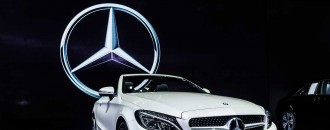
Consumption story set to grow three-fold to $4 tn by 2025: BCG
The Dollar Business Bureau
The domestic consumption story of India is likely to increase three-fold to $4 trillion by 2025 as the increasing affluence levels led to changes in the behaviour of consumers and the patterns of spending which have huge implications for the firms, a report by the BCG said.
A minimal year-on-year growth of expenditure of 12% in India is more than two-fold compared to the anticipated world rate of 5% and this will make it the third-biggest consumer market at $4 trillion by 2025, the report said.
India is already the third biggest economy with regards to purchasing power.
"The consumer market in India is set for fundamental changes,” said Nimisha Jain, a partner at BCG and co-author of the report. “As consumer market continues to grow and evolve, companies will need to shed conventional wisdom, try multiple business models simultaneously, and be prepared for rapid changes internally to adapt to changing consumer needs and behaviours,” she said.
The report pointed out that the affluent and elite income groups will make up for 40% of the total spending by 2025. The wealthy segment will represent the biggest consumption group for the first time.
In addition, digital channels will lead to 30-35% of all the retail sales and 8-10% of spending on retail will be from online channels.
Amongst the factors which will drive consumption is also the unique urbanisation pattern of the country, where emerging cities are growing at the fastest rate. Emerging cities having a population below 1 million will grow at the fastest rate and will make up around one-third of the overall spending by consumers by 2025, the report said.
By 2025, around 40% of the population will be in urban areas, and city residents will constitute for more than 60% of consumption.
In these cities, spending is already growing around 14% per annum, whereas consumer spending in big cities is rising at around 12%.
Another significant trend is the shift in the family structures where extended joint families have given way to the nuclear families, it said. The ongoing shift is important to marketers as the nuclear family spends 20-30% more per capita compared to a joint family, it added.
BCG surveyed around 10,000 respondents in 30 locations countrywide and analysed consumption in more than 50 categories.






 to success.
to success.